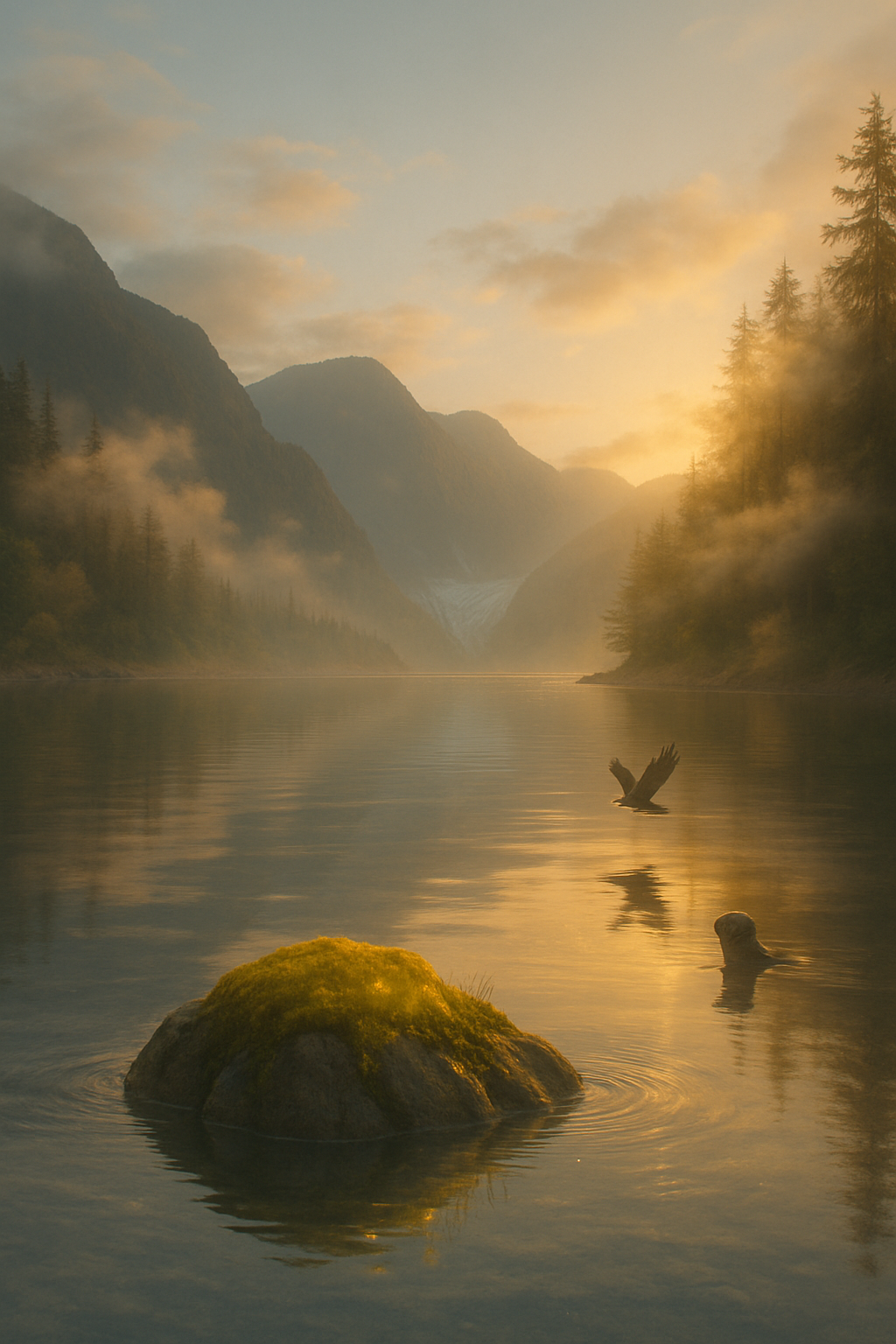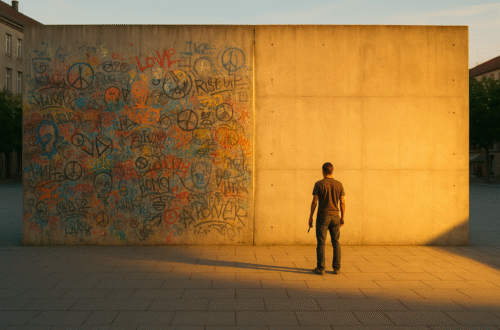Reflection Three in a Seven-Part Series on Encountering Transcendence in the Present Moment
The beauty of life is, as one wise man once said, “You never know what you gonna get!” And so it was with me this morning. For you see, dear friends, I had my week of reflection topics all selected and a tidy little sketch of where I wanted to go with the series. But alas, as so often happens when one gets too clever with a plan, life tossed in the unexpected—and I find myself, once again, wonderfully disoriented.
This morning I awoke, still quietly marveling at yesterday’s grandeur: Endicott Arm and the Dawes Glacier. Now, there’s a spectacle for you—towering walls of ancient ice calving thunderously into the sea, mountains draped in mist, waterfalls tumbling down like silver ribbons. It was all rather cinematic, really. The sort of thing that makes you feel terribly small and yet oddly significant, as if you’ve stumbled into nature’s cathedral during high mass.
And yet—and yet—it wasn’t the glacial thunder that clung to my heart this morning. No, it was something far humbler. A tuft of moss growing stubbornly on a rock near the waterline. The glint of a seal’s whiskers just breaking the surface. A single bird call echoing against the stillness of the fjord. These were the moments that lingered. Quiet things. Easily missed. And yet somehow, they felt sacramental.
I suspect, if the truth were told, that God has a particular fondness for small things. Infants in mangers. Mustard seeds. Sparrows. Loaves and fishes. A glance. A touch. A widow’s mite. Over and over, the sacred seems to show up not in the mighty roar, but in the overlooked detail—the sort of thing one notices only when they’ve stopped trying to be impressive.
There is a peculiar courage in smallness, I think. It asks nothing of us except attention. It doesn’t seek to dazzle, only to be known. And in this humble offering of presence, something quietly holy begins to bloom.
To embrace the sacrament of smallness is to choose presence over performance. It is to believe that the moment need not be grand to be meaningful, that the unnoticed may still be eternal. And that, perhaps, the very texture of transcendence is woven from the ordinary threads we too often discard.
Tomorrow, we’ll tiptoe into the subtle realm of “The Silence Between the Notes”, that sacred hush in which the soul catches its breath and music becomes more than sound.
But for now, I leave you with this: look closely. The divine, it seems, is far more interested in moss than monuments.





